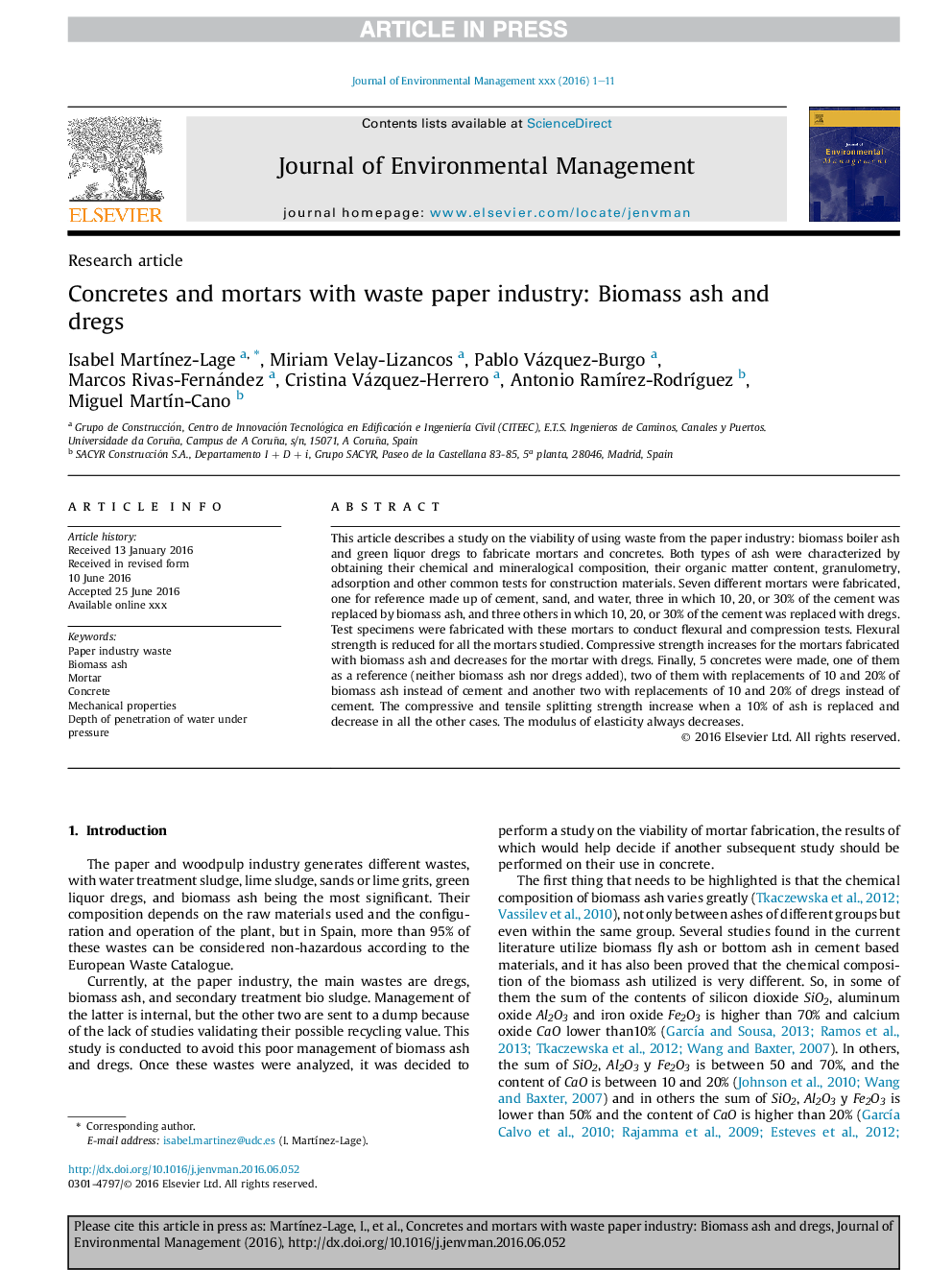| Article ID | Journal | Published Year | Pages | File Type |
|---|---|---|---|---|
| 7479925 | Journal of Environmental Management | 2016 | 11 Pages |
Abstract
This article describes a study on the viability of using waste from the paper industry: biomass boiler ash and green liquor dregs to fabricate mortars and concretes. Both types of ash were characterized by obtaining their chemical and mineralogical composition, their organic matter content, granulometry, adsorption and other common tests for construction materials. Seven different mortars were fabricated, one for reference made up of cement, sand, and water, three in which 10, 20, or 30% of the cement was replaced by biomass ash, and three others in which 10, 20, or 30% of the cement was replaced with dregs. Test specimens were fabricated with these mortars to conduct flexural and compression tests. Flexural strength is reduced for all the mortars studied. Compressive strength increases for the mortars fabricated with biomass ash and decreases for the mortar with dregs. Finally, 5 concretes were made, one of them as a reference (neither biomass ash nor dregs added), two of them with replacements of 10 and 20% of biomass ash instead of cement and another two with replacements of 10 and 20% of dregs instead of cement. The compressive and tensile splitting strength increase when a 10% of ash is replaced and decrease in all the other cases. The modulus of elasticity always decreases.
Related Topics
Physical Sciences and Engineering
Energy
Renewable Energy, Sustainability and the Environment
Authors
Isabel MartÃnez-Lage, Miriam Velay-Lizancos, Pablo Vázquez-Burgo, Marcos Rivas-Fernández, Cristina Vázquez-Herrero, Antonio RamÃrez-RodrÃguez, Miguel MartÃn-Cano,
